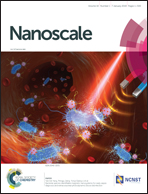Core hydrophobicity tuning of a self-assembled particle results in efficient lipid reduction and favorable organ distribution†
Abstract
Atherosclerosis, the deadliest disease in the United States, arises due to the build up of plaques in the arteries as a result of excessive cholesterol deposition and an impaired cholesterol removal process. High density lipoproteins (HDL), popularly known as “good cholesterol”, are naturally occurring nano-sized particles that, along with apolipoproteins, are deployed to maintain cholesterol homeostasis in the body. Both cholesterol efflux, from the fat-laden macrophages in the arteries, and intracellular lipid transport, to deliver cholesterol to the mitochondria of liver cells for metabolism, hold key responsibilities to maintain healthy lipid levels inside the body. We designed a library of nine mitochondria targeted polymer–lipid hybrid nanoparticles (NPs), comprised of completely synthetic yet biodegradable components, that are capable of performing HDL-like functions. Using this library, we optimized a superior mitochondria targeted NP candidate, which can show favourable organ distribution, therapeutic potential, and non-toxic properties. Two targeted NP formulations with optimum NP size, zeta potential, and cholesterol binding and release properties were identified. Lipid reduction and anti-oxidative properties of these two NPs demonstrated cholesterol removal ability. In vivo therapeutic evaluation of the targeted-NP formulations in apolipoprotein E knockout (apoE−/−) mice indicated lipid reduction and anti-inflammatory properties compared to non-targeted NPs. This synthetic targeted NP with potential abilities to participate in both extra- and intracellular cholesterol transport might potentiate therapeutic interventions for heart diseases.



 Please wait while we load your content...
Please wait while we load your content...